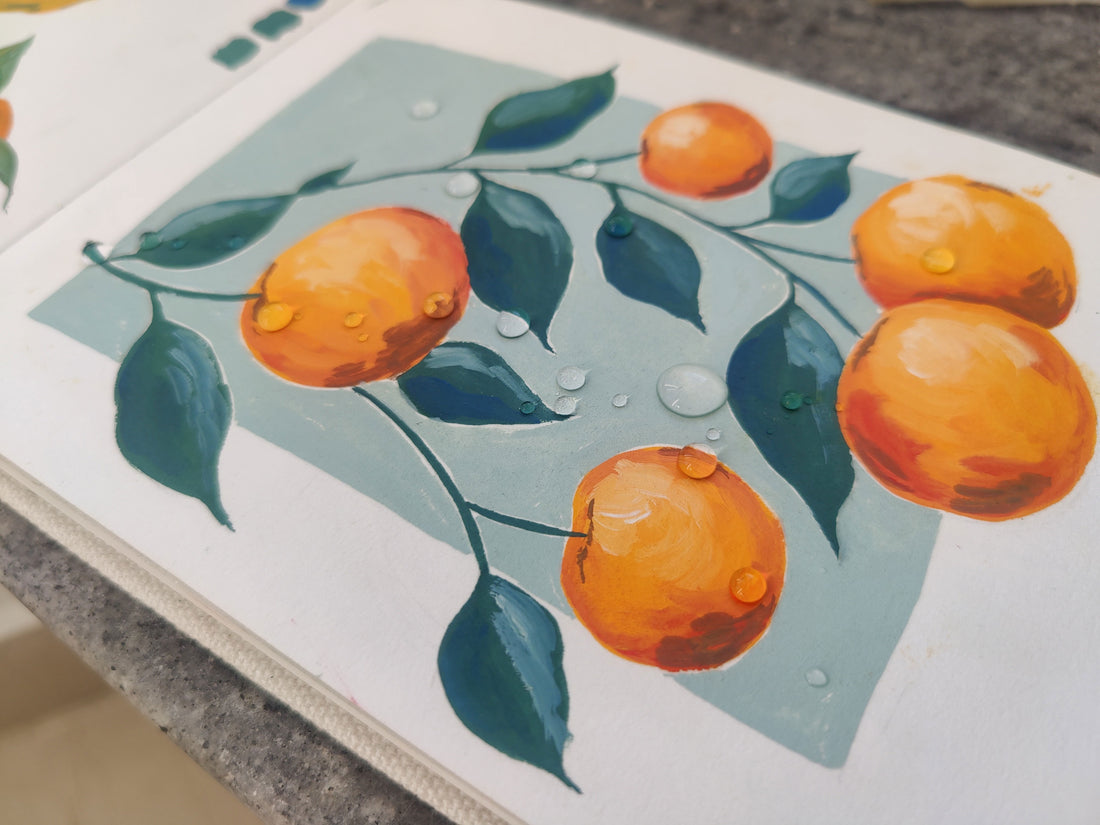Protecting your Paintings: How to Varnish Your Gouache Art

Share
Gouache, being a water-based paint, can be reactivated quite easily. This is great when you are painting with it because you can reactivate the color on your artwork to add blend and add effects. This also means no paint on the palette goes wasted as they can be reactivated and used. This is especially useful when you’ve mixed your own unique shades and we all know the mantra - mix more than you’ll need cos you can never get the same color twice!
The problem, however, is that the paint can get reactivated just as easily on artwork that’s completed. All it takes is damp fingers or an accidental spill or splash of liquid.
This is why it is very important to protect your work and that’s where varnishing comes in. Varnishing your artwork involves applying a protective varnish or coating to the finished gouache painting in order to protect it from elements such as sunlight, moisture, dirt, dust, etc.
In this blog, I’ll be talking about varnishing and how you can do it to protect your art. If you’d like to see how it’s done, definitely check out the video!
Things you’ll need
What you’ll need to varnish your artwork is quite simple. All you need is a varnish, in the video, you’ll see me using Dorland’s Wax Medium. It’s a white-looking soft waxy medium that comes in a tub. This can also be used as a medium to mix oil paints but it makes an extremely good top coat for sealing your paintings. This might seem pricey for what looks like a small tub but it should last you for quite a lot of paintings.
I use cotton pads that we use regularly to remove make-up, etc. to apply the varnish on the painting. And of course, you’ll need a painting that needs protecting!
Remember, no matter how small your work is, the time, effort, and interest that you’ve put in deserves to be protected and saved.
How to varnish your painting
Use the cotton pad to lift a generous amount of the medium onto the cotton and apply it to one part of the painting. Now all you have to do is spread it on the painting like you would butter on toast. Watch the video to see exactly how I do it.
Be very generous with your application, apply the medium as evenly as possible, and ensure that you cover your entire painting without leaving even a tiny part out. You’ll also notice that the vanish changes the value of the color a little bit. It might make the color a touch deeper than it was originally.
Gouache is not a 100% lightfast medium. This means that the color will change with prolonged exposure to light. This is another reason why it is crucial to varnish your work, especially, if you are gifting or selling your pieces. That way you can ensure that your painting does not fade or lose color over time.
The next part is the most important: letting the painting dry for 48 hours. This process does 2 things to your paintings:
- It completely seals off your painting so it’s waterproof
- It will help retain the lightfastness of the color, i.e., prevent it from fading or losing color.
Pro Tip
As obvious as this may seem, I’m still going to go ahead and say it! Make sure you are 100% done and satisfied with your work before you apply varnish. If you need to, leave your painting aside for a few days and review it once again to make sure you’re satisfied (and make changes or additions to it if you aren’t). Then, go ahead and seal it.
Some points to remember for you
- Expect slight surface uneveness: When you use certain types of varnish, like Dorland’s Wax Medium, it might create an uneven or slightly textured surface. Some people like to buff the top but I like to leave it as it is.
- Not all artwork needs varnishing: For example, sketchbook pieces are not as exposed to light as pieces of art that you’d do on paper or canvas. For the latter, definitely consider varnishing, especially if you plan to frame it.
- Varnish after scanning or digitizing your artwork: If you’re planning to scan your work to be used as prints or on merchandise, then I would suggest you scan the piece first before you varnish it. This is because varnishes tend to deepen the colors a little bit and scanning it first will ensure that the colors on your artwork are digitised in the colors you intended them to be. Also, the varnish may add a slight shine, which you don’t want showing up in your scan.
